While the National Library of Australia is the custodian of millions of books, among its treasures are items that show how books were made. A stellar example is the collection of pattern plates for the supplement to John Gould’s The Birds of Australia. This blog is a collaboration between our Collection Care team – Janet McDonald, Aurelie Martin, Nicki Smith – and Rare Books and Music Curator Susannah Helman, which focuses on the conservation treatment work carried out on these plates.
In recent months, our conservators have worked on the so-called ‘pattern plates’ for the supplement to The Birds of Australia by the great British ornithologist John Gould (1804–1881). Though we may think of Gould as an artist, he is better described as an entrepreneur, naturalist and scientist – yet he would frequently do the preliminary sketches for works he published. Gould’s books were a group effort. Many of the illustrations were the work of his wife Elizabeth (1804–1841) and artist Henry Constantine Richter (1821–1902).
Gould and his wife spent nineteen months in Australia in the late 1830s, collecting specimens and making sketches. The Birds of Australia is considered to be the greatest of Gould’s many works. It featured all the Australian, and some Pacific, birds then known to European scientists. It was published in seven volumes between 1840 and 1848, with a supplement appearing in 1869. In his introduction, Gould explains why he wanted to publish a supplement, saying it contains ‘figures and descriptions of the novelties that have been obtained during the interval between 1848 and 1868’. The National Library of Australia holds two complete sets of The Birds of Australia, one of which is fully digitised.
The Birds of Australia has a total of 681 illustrations – all hand-coloured lithographs. Lithography is a printing process in which illustrations – plates – are produced by copying drawings and watercolours onto chemically treated, smooth-surfaced limestone or zinc plates and printing from these. Gould used limestone. The original sketches for The Birds of Australia volumes were made in Australia, mostly by Elizabeth Gould. She also created 84 of the final lithographs. After Elizabeth’s death in 1841, not long after the birth of her eighth child, Henry Constantine Richter took over creating the lithographs. He worked for Gould for forty years on various projects.
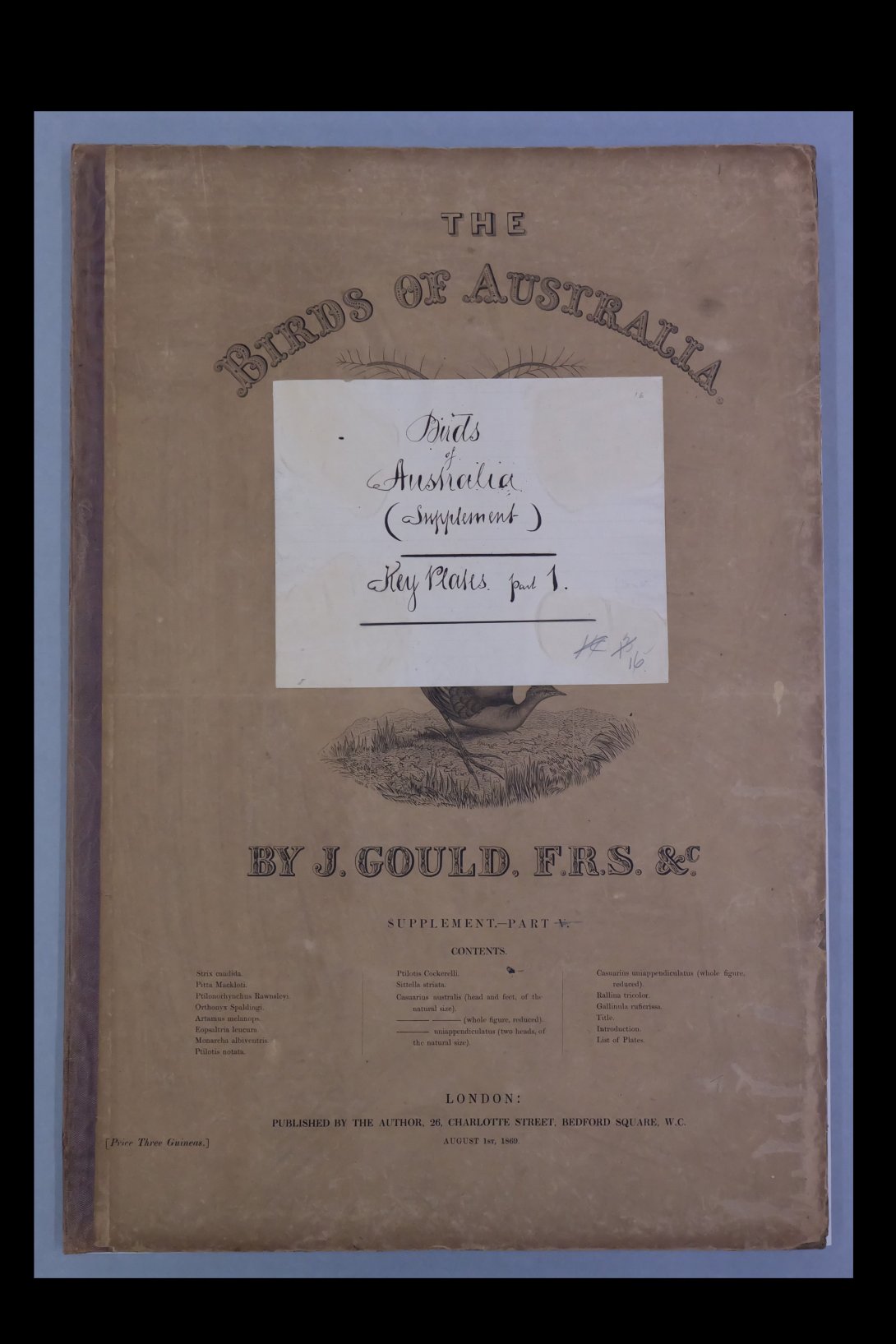
The Library holds the pattern plates for the supplement volume to The Birds of Australia, published in 1869.
Pattern or key plates are prototypes, printed without the titles of the published plates. By referring to them, a colourist could ensure that each print was coloured in the same way. Some have written annotations or instructions. Many of these are clearly feedback from Gould himself. In a couple of instances, there are dates and times, likely deadlines.
The 80 hand-coloured pattern plates show how complex the printing and colouring processes were. They bring into focus the quality of the prints and the attention to detail required to complete them. The plates are held within large, labelled folders. In an added bonus, the inside of one folder has two original watercolours, one of which is for a completely different publication – a Preparatory sketch of moorhens with young among waterlily and reeds (c.1862) for The Birds of Great Britain. It is thought to be by John Gould himself. The supplement’s letterpress, the main text, was printed by Taylor and Francis of London's Fleet Street. The plates were printed in black and white by the firm of Hullmandel and Walton, and then coloured. By the time of the supplement, Gould’s longterm colourist Gabriel Bayfield (1781–1870) was in his 70s and 80s and had likely retired. Evidence uncovered through this conservation work suggests that the supplement may have been coloured, at least in part, by Thomas Bayfield, a distant relation.
This pattern plate for the female (top) and male (bottom) Cape York Australasian Figbird has an annotation directing the colourist: ‘the breast be done with ground gamboge should be very bright and delicate’. Gamboge is a yellow/orange pigment extracted from the resin of trees in south and south-east Asia, traditionally used to dye the cloth of the robes of Buddhist monks.
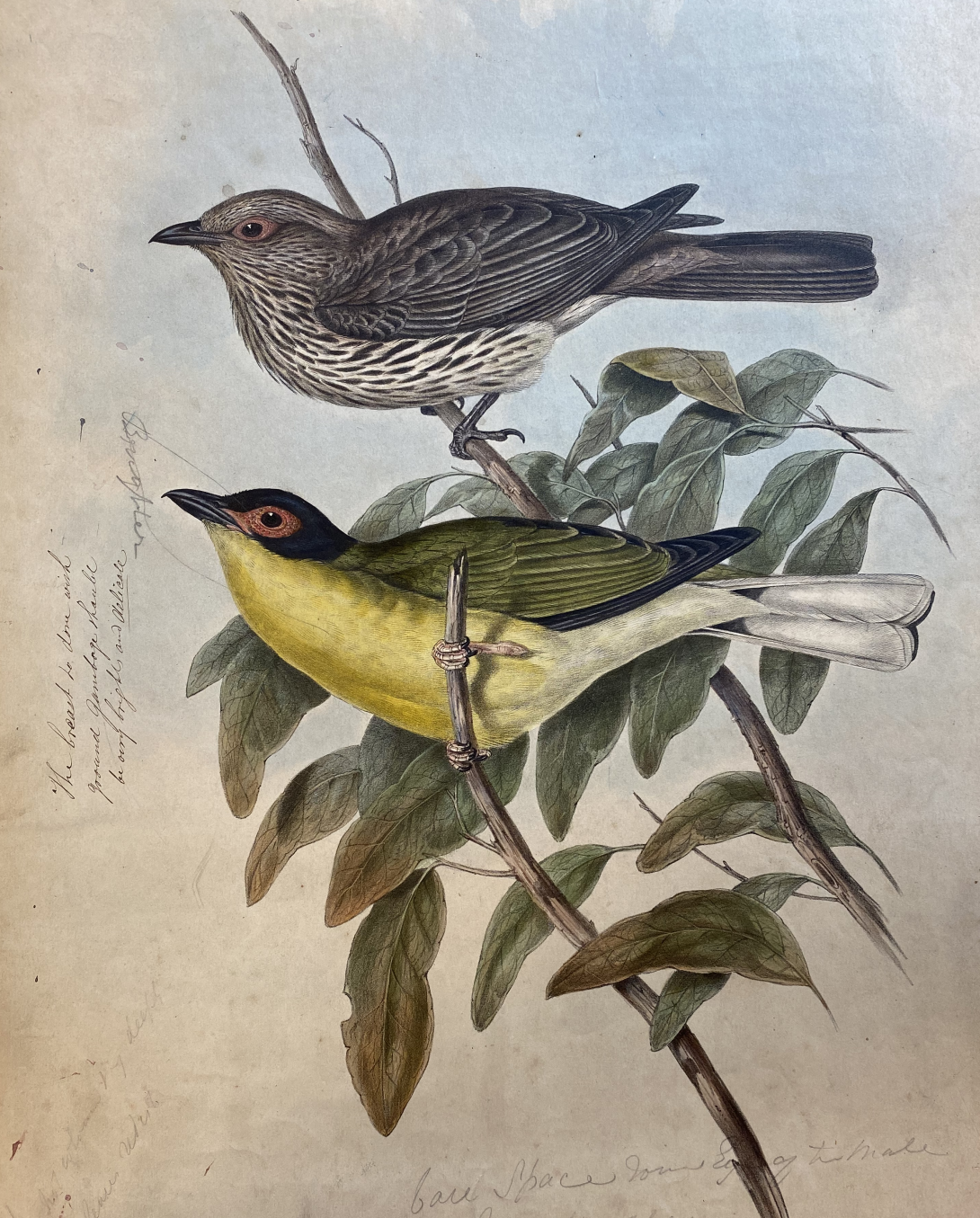
Referring to his collector, Australian naturalist John MacGillivray (1822–1867):
Mr. MacGillivray informs me that it is a very common bird in the neighbourhood of Cape York, where he daily observed it either in pairs or in small parties of three or four individuals, which were generally very shy and difficult of approach. (The Birds of Australia, p 85)
The pattern plates were heavily used by the colourists – and they look it. Almost all have paint splatters front and back. Before coming to Australia in the late 1880s, they were likely conserved in London. As Gould’s London publisher H. Sotheran & Co. explained in a letter to E.P. Ramsay Esq. (of Sydney’s Australian Museum) on 17 August 1888:
It may be well to explain that the plates referred to were used by Mr Gould as patterns for many years and consequently became somewhat soiled and the margins in some cases ragged; but all have been put in the best possible condition. You personally know the value of such patterns and are aware that it would take years of the time of our ablest living artists at a cost of thousands of pounds sterling to reproduce their equal.
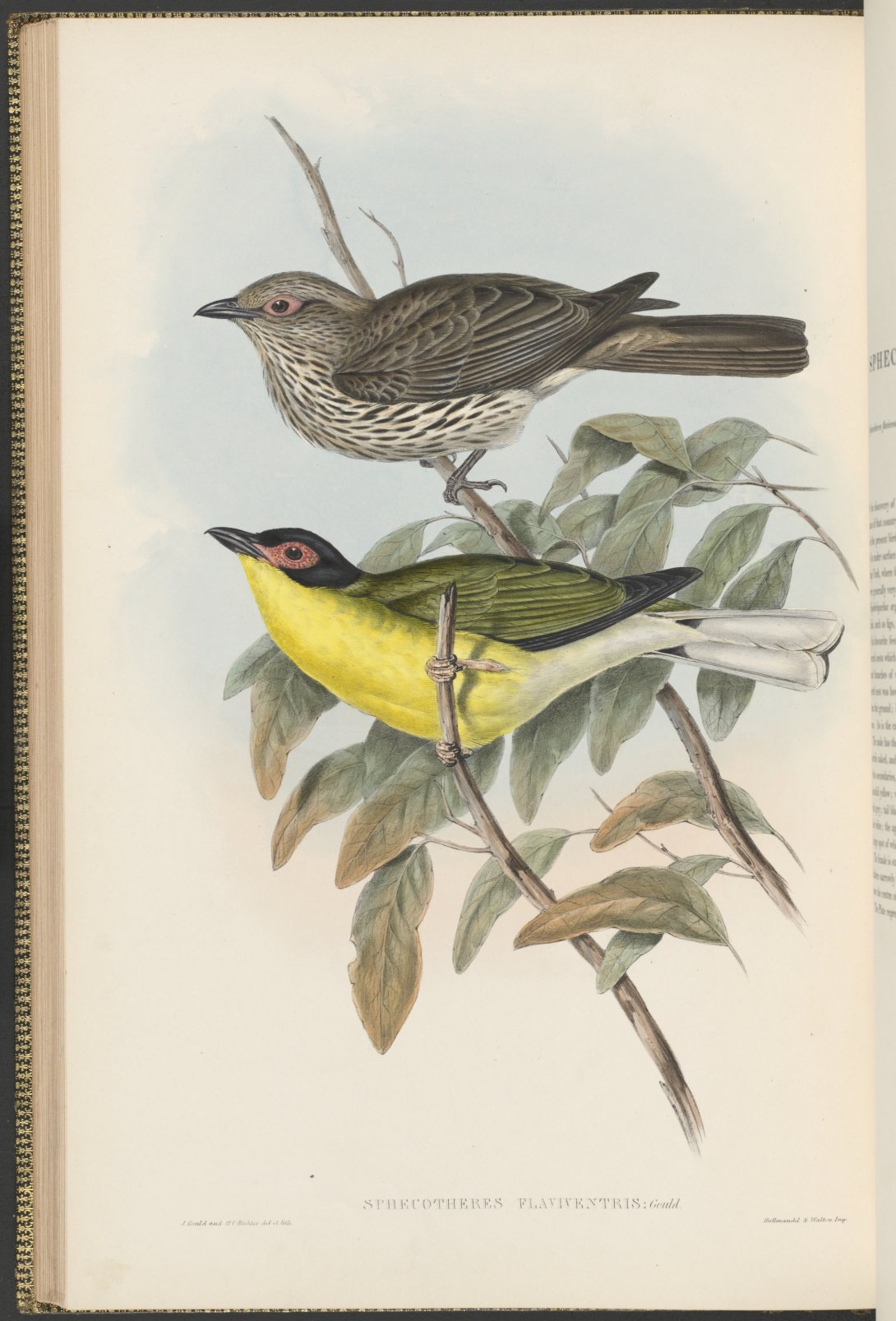
As with many plates of this period, the paper has brittle edges which has contributed to tears and losses. Fine soot-like particles coat the plate on both sides dulling the vibrancy of the images. Our conservators have reduced the soiling, repairing the tears, filling the gaps so the material is stable for handling and digitisation.
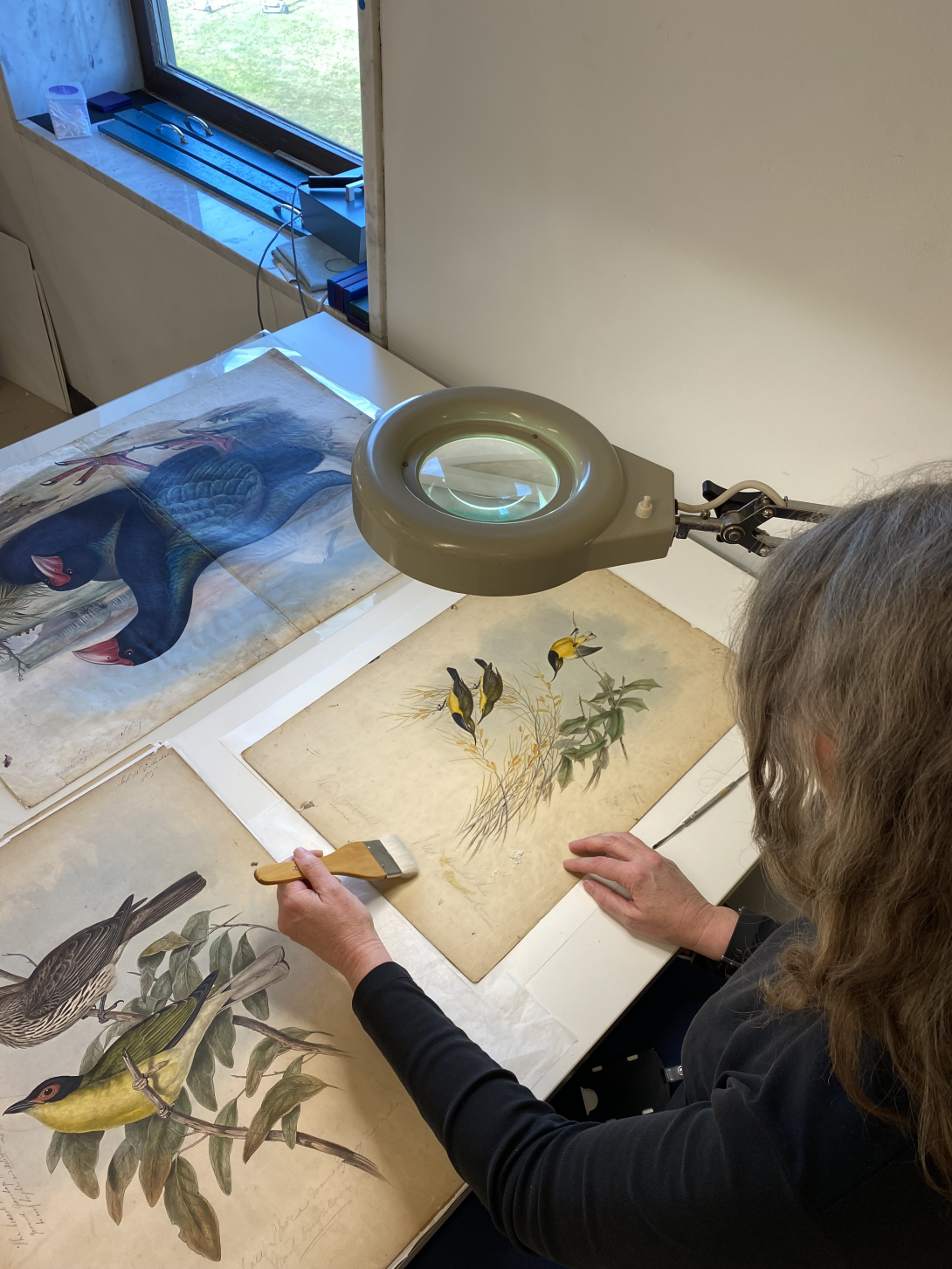
The Birds of Australia also featured birds from the region. The only double-page print in The Birds of Australia supplement is actually for a New Zealand bird, the endangered takahē, which Gould calls Notornis Mantelli. The space Gould devoted to this bird no doubt reflects Gould’s enthusiasm for this extremely rare bird.
The acquisition of a new species is always a matter of great interest; but when, as in the present instance, it is of one so nearly extinct as to be only known to us previously by its fossil or semi-fossilized remains, the interest becomes enhanced in the highest degree (The Birds of Australia, p 85)
Below, is a photo of the print before treatment. For a conservator, the areas of focus on this plate are the old repairs along the central fold, tears and missing pieces around the edges.
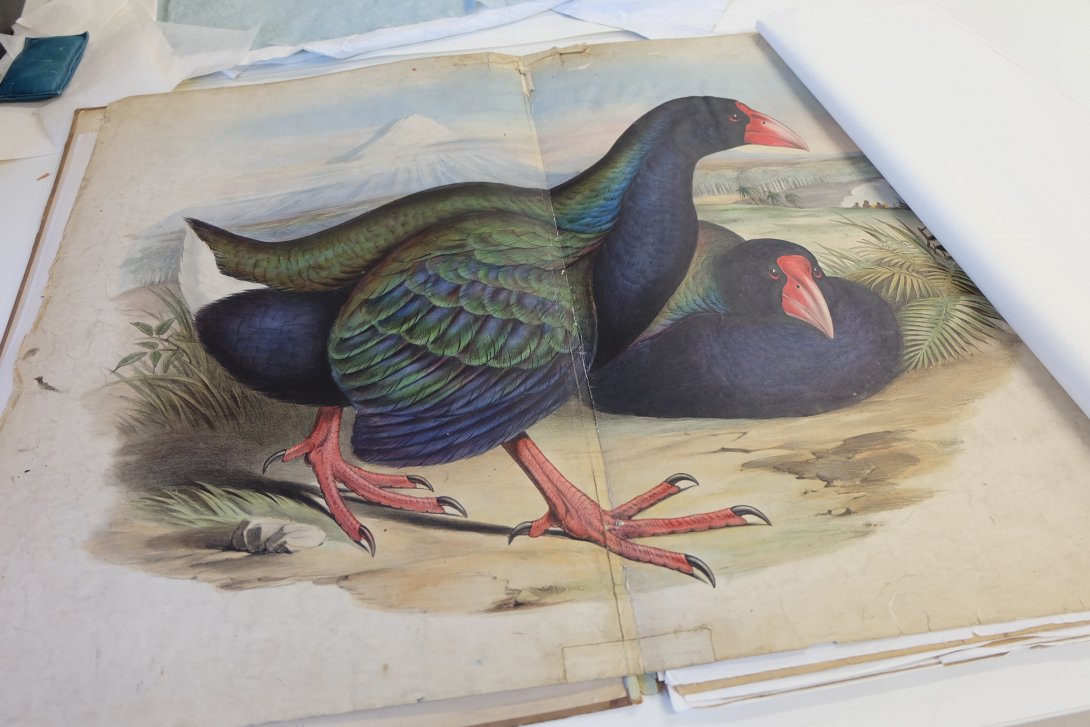
Interestingly, the old repairs must have been what was available at the time as they include a used envelope, part of a handwritten letter, and woven cloth. It was exciting to discover the envelope fragment during the conservation treatment process, as it was not visible previously. Postmarked London 7 December 1858, it is addressed to a Mr T. Bayfield of 19 Smith Terrace, Chelsea in London. In the 1861 census, Thomas Bayfield is listed as a 29-year-old colourist living with his 22-year-old wife Elizabeth, five-year-old son William and two-year-old son Harry. By the 1871 census, Thomas, now Thomas C. Bayfield, was working as a photographer and he and his wife, their four daughters and a servant, were living in Horsham, Sussex.
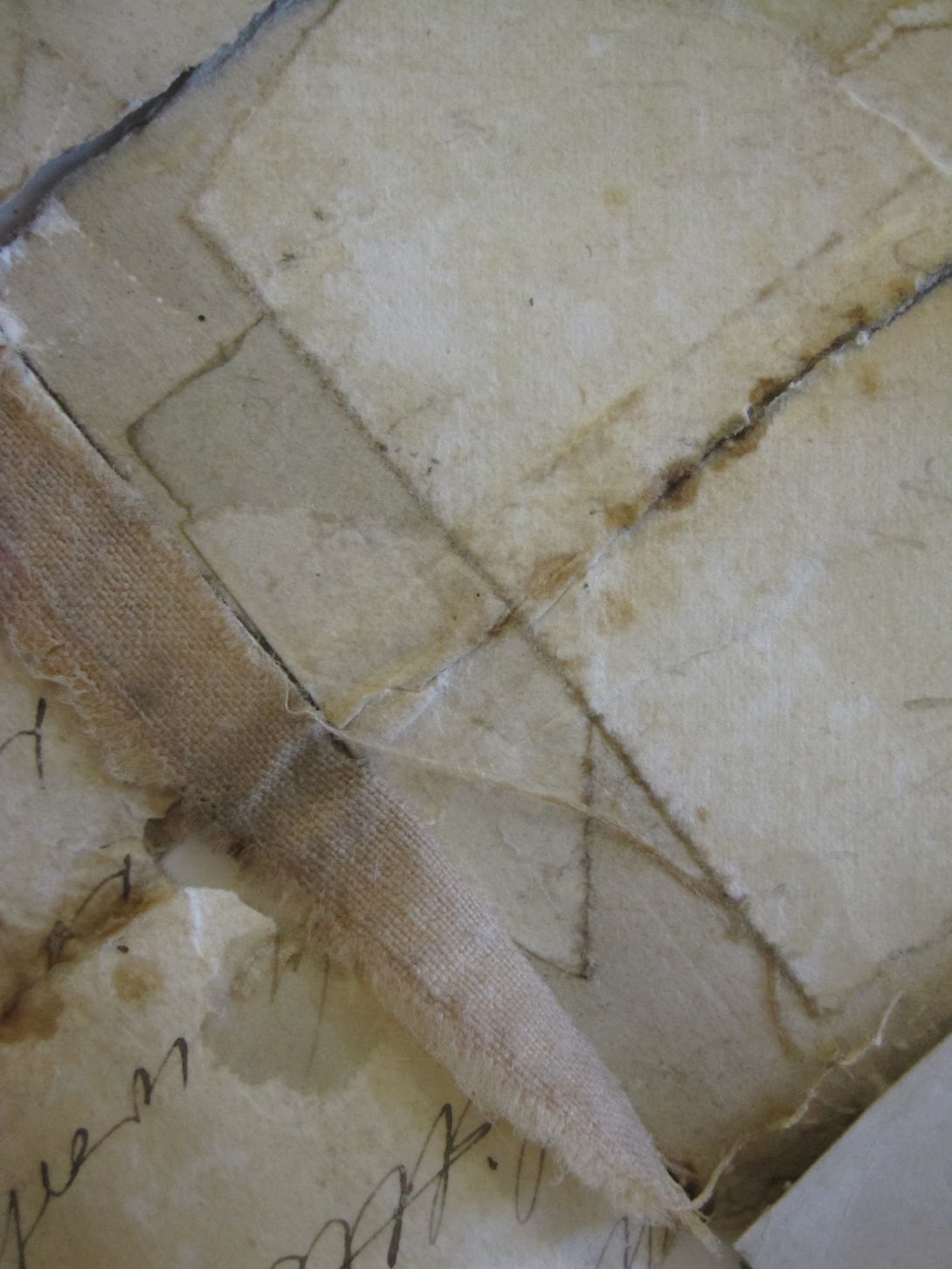
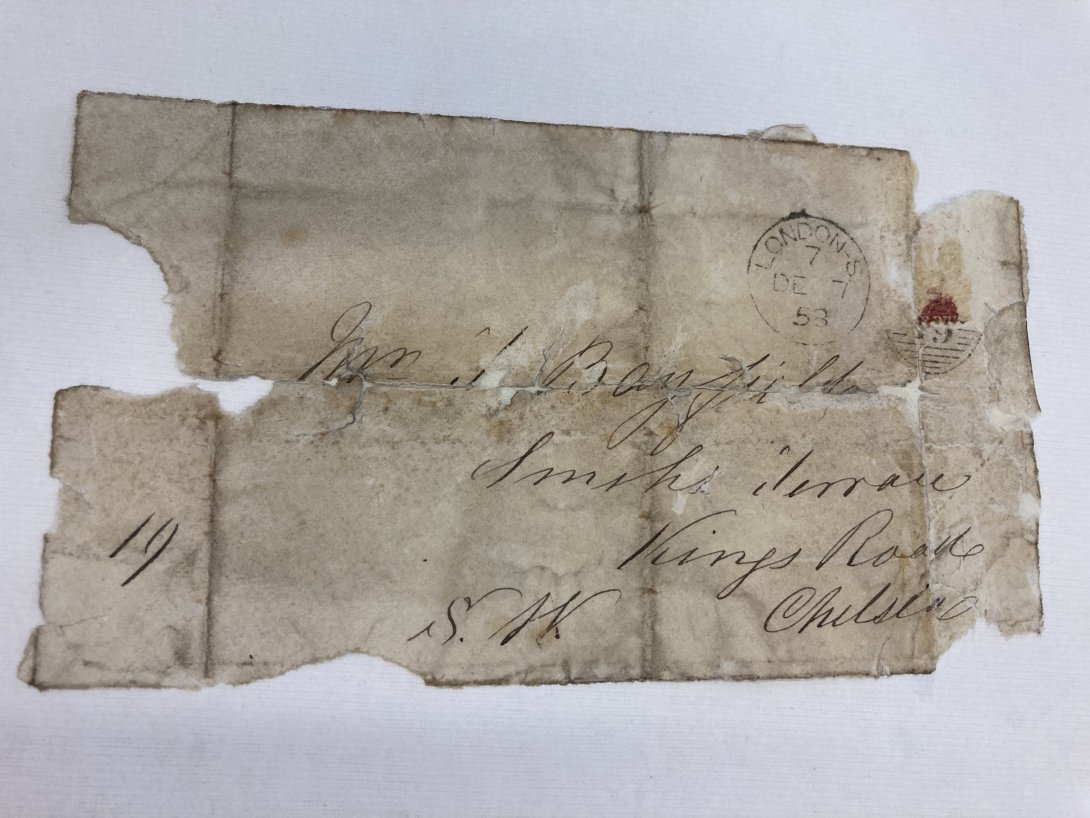
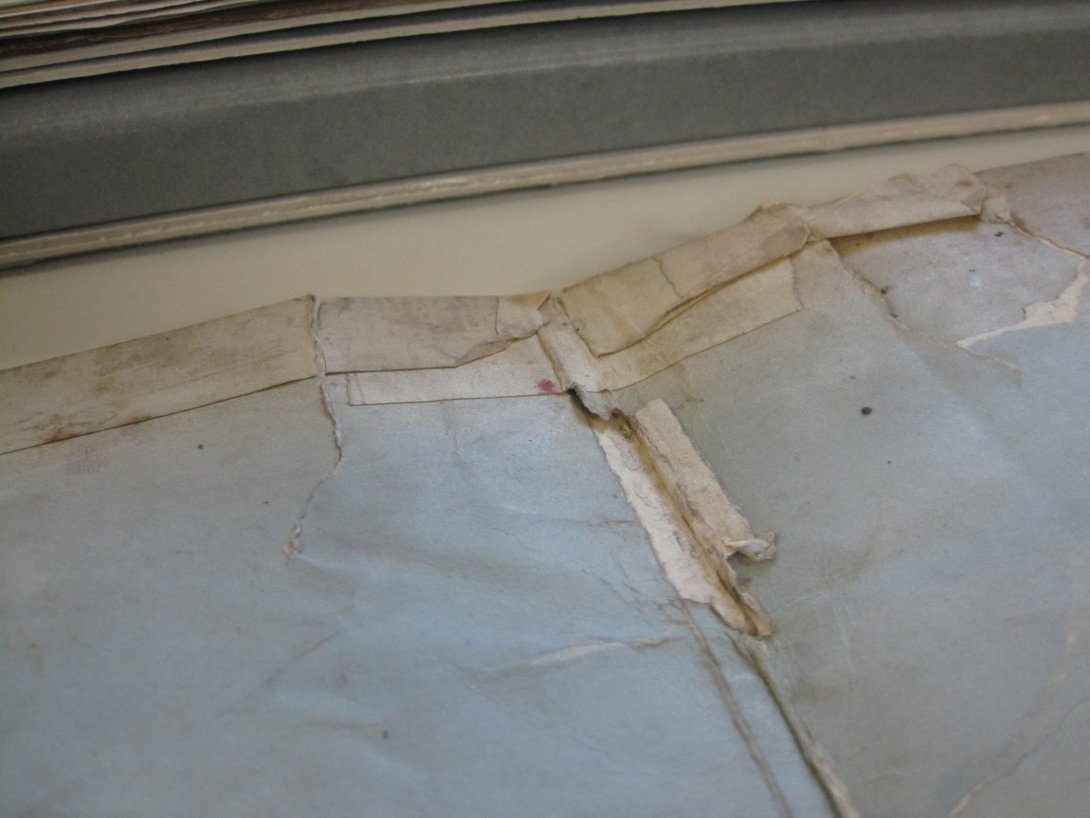
The old paper repairs were removed as they were visually obvious, dirty and had remnants of old animal glue residues. Removing the old repairs also allowed us to realign the tears that had been misaligned when repaired previously. A hand-made Japanese tissue paper and wheat starch paste were used to repair the tears and infill the missing pieces. Repairing the edge tears helps prevent further tearing and losses with access and handling. The paper infills are toned to match the original paper. This is a standard paper conservation approach as Japanese paper is a strong, flexible high-quality paper and the wheat starch paste is made fresh in-house as a high-purity adhesive that is fully reversible. All the treatments are documented and become part of the history of these works.
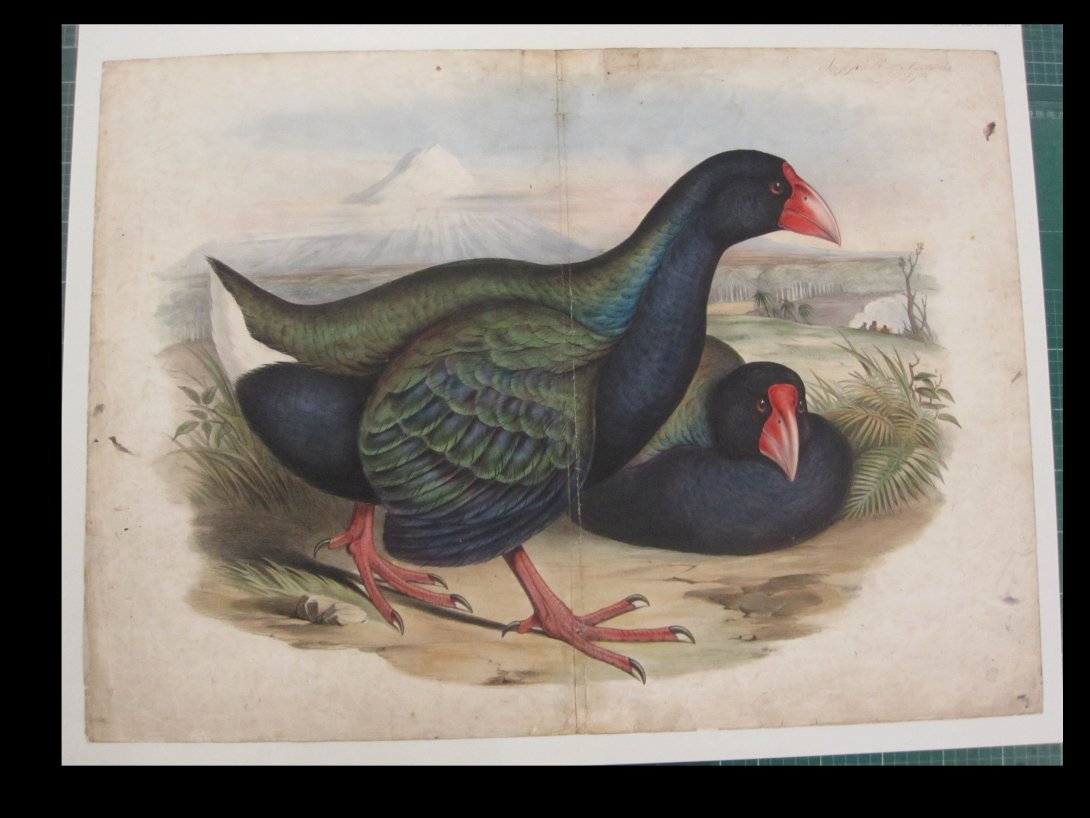
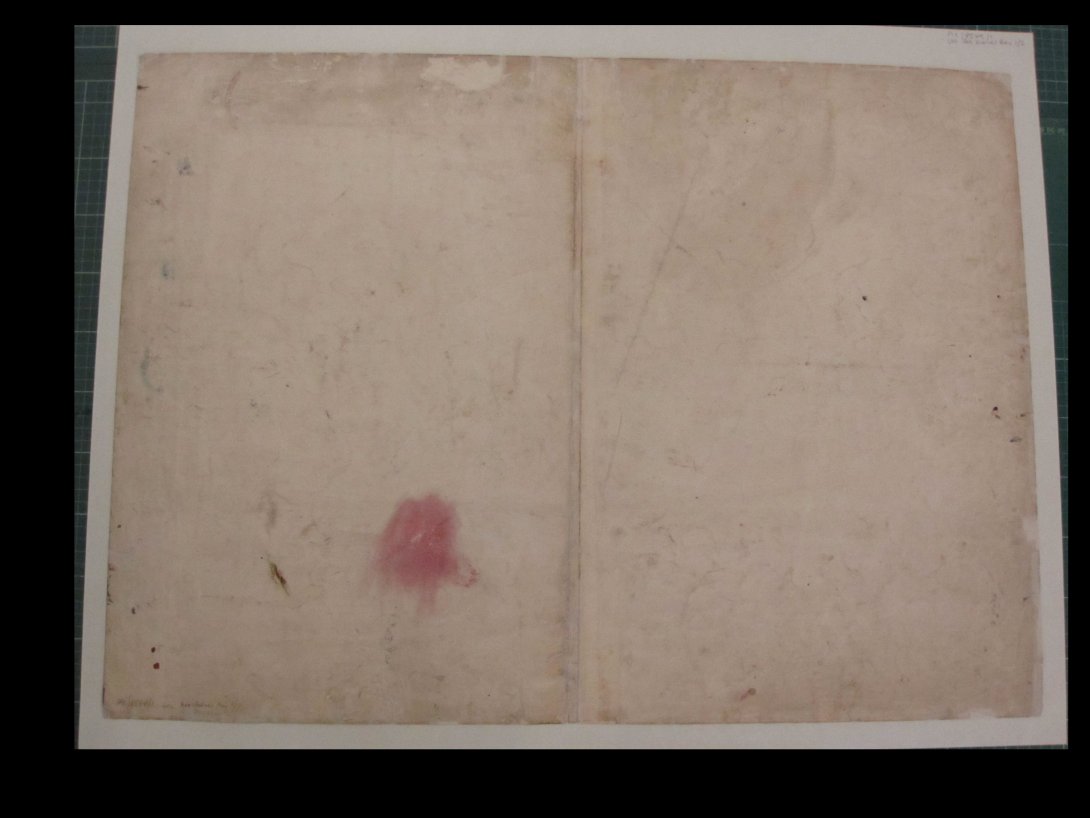
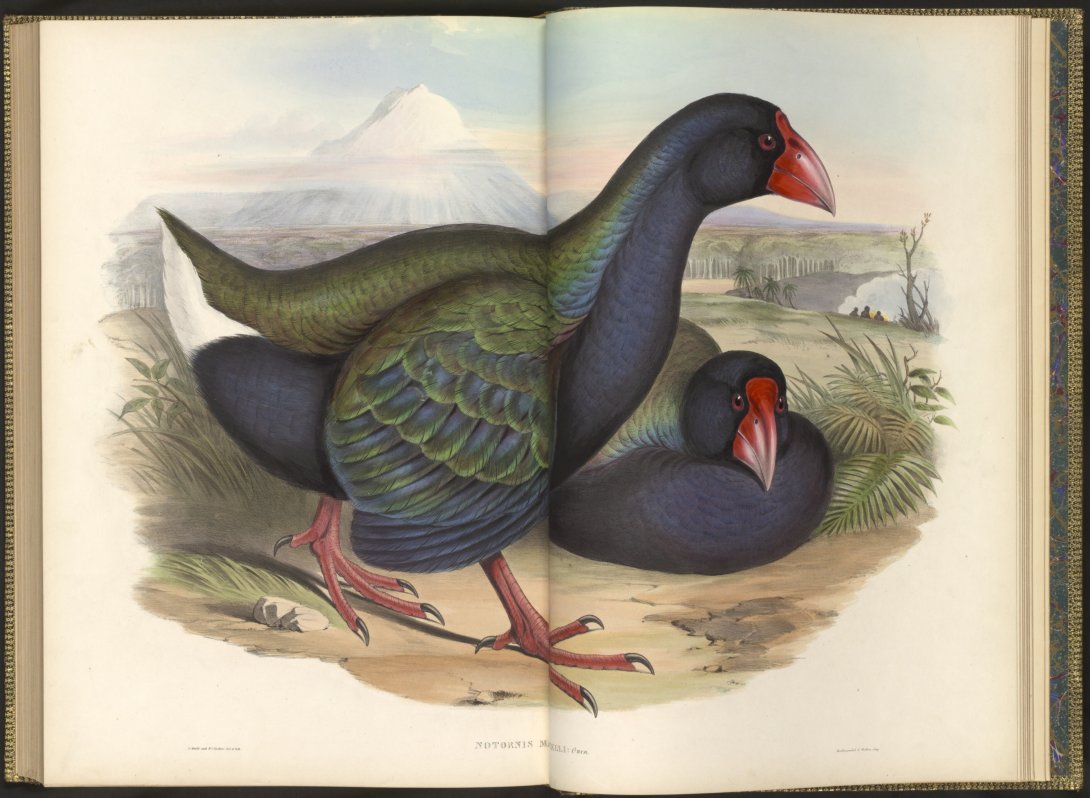
These pattern plates are part of a larger collection of Gould pattern plates held by the Library – the Library also holds the pattern plates for Gould's The Mammals of Australia (1845–1863). It also holds numerous other original manuscripts, works of art and publications associated with Gould and his artists.
In 1951, ornithologist Tom Iredale (1880–1972) published an article in the journal Australian Zoologist claiming an ‘amazing discovery’. A large number of Gould ‘pattern plates’ were found in the safe of the Museum of Applied Arts and Sciences in Sydney – 209 were offered to and acquired by the National Library of Australia. A larger collection of Gould pattern plates had already been transferred to the Mitchell Library in Sydney from the same source. Parts of the Library’s collection were exhibited in the Australian Museum’s John Gould Inc. exhibition in 2004. The following year, an article by Matthew Stephens about the history of the Library’s pattern plates appeared in the National Library of Australia News.
The Library’s pattern plates are an important record of how one of the most important, beautiful books about Australian birds was published. They are now conserved for the future.